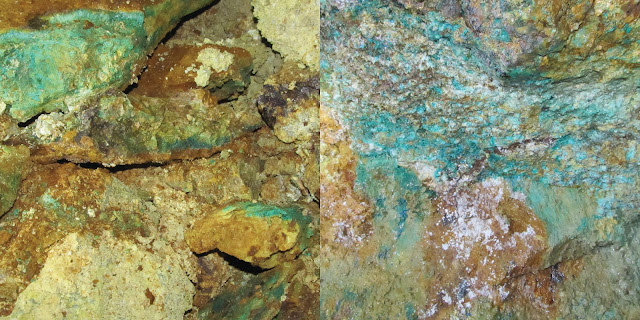We are celebrating colour of the month #14. Rhodochrosite is a pink manganese carbonate mineral used as an ore, a gemstone and a crystal specimen.
In March, I was invited to develop a research/residency project on the potential use and colour extraction of the Rhodochrosite stone in Andalgalá, in the region of Catamarca, Argentina. In addition to that, I taught courses on Design, Colour Theory and Alchemy to locals with no design or colour formation whatsoever.
Rhodochrosite is Argentina's national stone, also known as 'Rosa del Inca'. It is a stunning pink-coloured stone with white stretch marks and veins creating a beautiful pattern.
Andalgalá is a small village in the region of Catamarca in the northeastern part of Argentina. It is a region rich in natural resources such as gold, silver, lithium, rhodochrosite, onyx stone and many more. It has two of the biggest Rhodochrosite mines in the world, Capillitas and Santa Rita mines. I had the chance to visit the latter.
Santa Rita Mine is at 3500 mts of altitude. It is possible to arrive to the hotel 'El Minero' by car, and then hike for 2 hours to reach the mine. The only way to get there is hiking up and then down. It has the most breath-taking views and landscapes. Along the way, we found gorgeous specimens of limestone, iron oxides, quartz, different minerals and some kind of sulphur.
People from
Andalgalá are very religious and spiritual. They have their own rituals. Before
entering the mine you should pick up a stone and make an intention to the Pacha
Mama (Mother Earth) leave it outside the mine.
Going inside the mine is the most amazing experience. Perceiving the mountain and its colours from the inside and feeling the cool temperature makes it worth visiting. It is so beautiful to see the pink vein that the Rhodochrosite forms. This type of formation and mine is a metamorphic rock (geology occurrence).
The formation of Rhodochrosite usually occurs in fractures and cavities of metamorphic and sedimentary rocks. In metamorphic rocks is found as a vein. On the image below you may see the Rhodochrosite and also other copper minerals which gives a turquoise colour.
Rhodochrosite is composed of calcite (carbonate mineral) with chemical composition MnCO3. Colour of calcite is white or non. It is transparent to opaque and many occasionally show phosphorescence or fluorescence. Calcite like most carbonates will dissolve with most forms of acid.
There are different qualities to this stone depending on the colour's intensity. In Argentina the purest form is found as a rose-red watermelon colour called Ortiz specimen, but impure specimens can be found from shades of pink to pale brown. In the Mohs scale its hardness varies between 3 to 4, therefore it is soft to crush. In the image above, I am holding an Ortiz specimen.
Rhodochrosite is generally easy to identify and rarely confused with other minerals. In the image above, the different qualities of Rhodochrosite are evident and also a polished piece, in which the white veins and patterns are visible.
Photos and words: Studio Laura Daza
Bibliography:
www.geology.com/minerals/rhodochrosite.shtml












